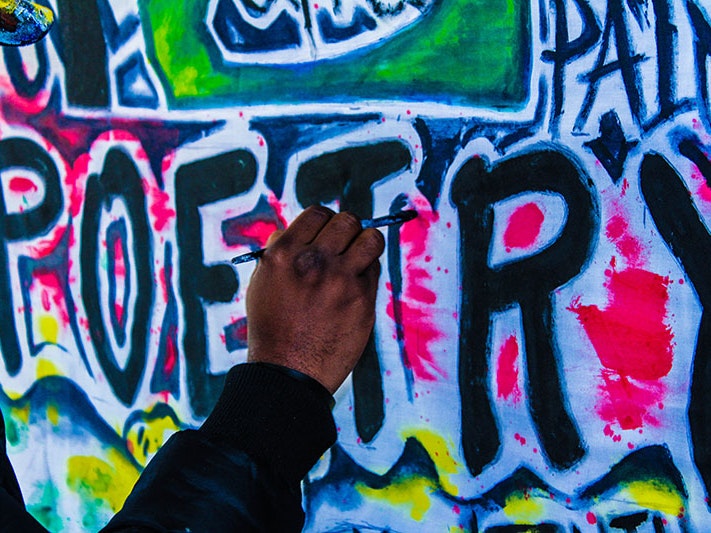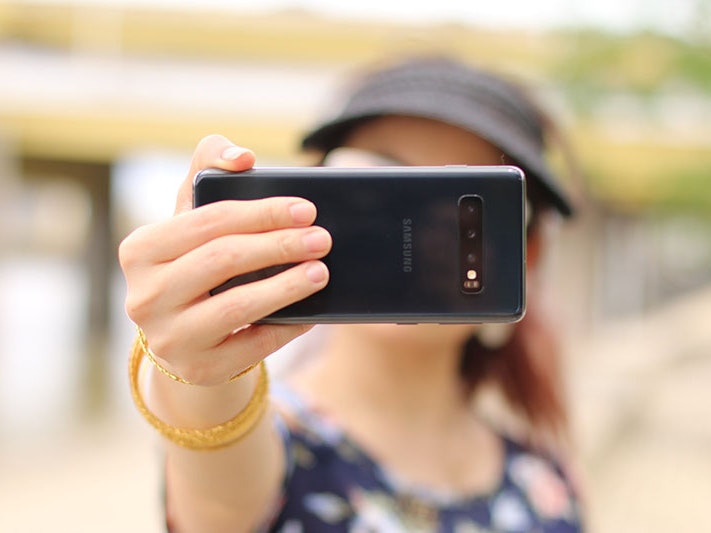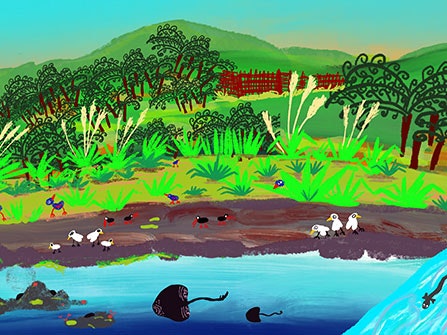
Rich task 5: Stop, collaborate, and listen
Respond to art through poetry, collaboration, and performance.
Free museum entry for New Zealanders and people living in New Zealand
Open every day 10am-6pm
(except Christmas Day)
Free museum entry for New Zealanders and people living in New Zealand
Create a layered, artistic response to the story of the land beneath you and the community that surrounds you.
We are looking at the ways in which the land has changed, and how these changes reflect our collective historical stories.
Through these activities, learners will:
examine the impact of human activity on their local context
use artmaking practices to communicate ideas around time, continuity, and change
consider ways in which indigenous ways of knowing can be reflected in our understandings of place.
Over the course of time, people have changed and been changed by the environment. These changes were governed by different values and cultures that sometimes coincided and sometimes clashed. Our place-based histories are compelling points from which we can understand not only our environmental history but also the part we play in a regenerative future.
Dufour’s wallpaper was made using woodblock prints, stencils, and hand-colouring to create a panoramic experience. Similarly, Reihana’s work creates a panoramic, immersive experience – but uses completely different technologies.
Look back on the insights that were gathered from the Explore kete. What do you know about the ways in which the local, living landscape has flexed, morphed, adapted, and changed?
Gather together sources that provide information for the way things were in the past. Learners might listen to elders, kaumatua, read diary entries from explorers, whalers, and early settlers, or analyse paintings and sketches. Do a similar task, gathering sources for the way things are now. Compare and contrast what has stayed the same and what has changed.
Sketch the broad, common features of the landscape together so they can be used by all groups to design a mural that speaks to the ways in which the natural landscape has changed over time. Learners may like to experiment with drawing software, such as ProCreate.
Learners may decide to focus on one street in the neighbourhood, or perhaps even just one patch of land (for example, a park, the school site, or a place of historical significance).
There are all sorts of ways to approach this creative task and for it to evolve. Examples include:
starting with a street map of the local area and layering over it the features that are underneath the urban environment. Where are the pā, the waterways, the natural wetlands, and the old stands of ngāhere? Play around with text, swapping in and out names for the landmarks that might reflect local history differently.
consider an aspirational environmental vision – what do you hope this landscape looks, feels, and sounds like in the future? Learners may like to overlay the past expression of the local landscape with the current landscape. What direction does that indicate for a regenerative plan?
as with Lisa Reihana, learners might like to experiment with creating soundscapes to layer over the images they create. What are the sounds of the past and present environments? What can we no longer hear? Learners may want to use taonga puoro, and natural objects such as water, sticks, and stones, to create a soundscape suggesting times past.
learners could explore creating a triptych and overlay a timeline with a sequence of local events that are reflected in the work, to help describe changes that have taken place in relation to land, water, and air.
learners could experiment with projecting digital versions of their work onto external or visible walls. This works especially well at night, and could potentially tie in with a Matariki dawn celebration.
What does the land want to do here? How is the land currently thriving or suffering?
In what ways did technology assist us in creating an expression of our relationship to this place?
What are the connections between the health of te taiao and the health of our community?
How does scale help us to connect with big ideas?

Respond to art through poetry, collaboration, and performance.

Examine a selfie portrait image and manipulate aspects of adornment to reflect on how identity is communicated.

Inspire others with what you have done! Email us with your learning so we can celebrate and share your awesome mahi!